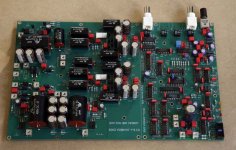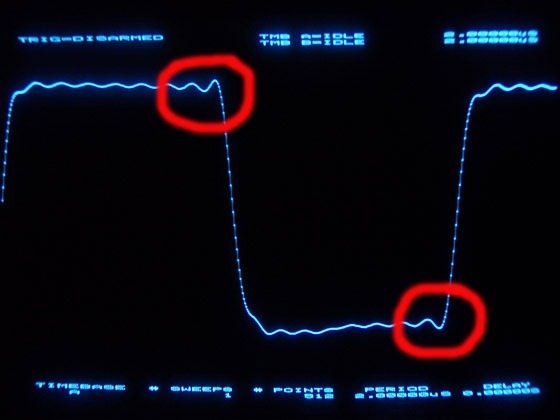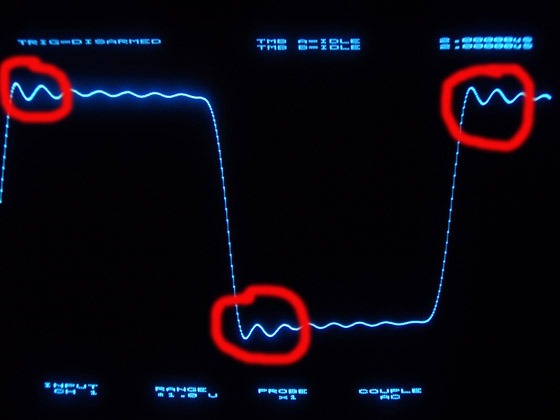Hi Oon,
What you see as beating is actually the attenuation of higher frequencies. Which is also why you don't hear sss's so much.
If you have attenuated treble, then I'd suspect you don't have a steep cut off low pass filter after the DAC. If you did, I think you'd see all kinds of problems with complicated waveforms, caused by phase and amplitude fluctuations as a function of frequency due to the large order filter's transfer function.
I believe the side affects caused by a digital filter is less severe than that so I feel its a good compromise to a bad design problem (i.e. CD's Fs=44.1kHz).
I'll have a look at the link anyway.
Cheers,
Phil
What you see as beating is actually the attenuation of higher frequencies. Which is also why you don't hear sss's so much.
If you have attenuated treble, then I'd suspect you don't have a steep cut off low pass filter after the DAC. If you did, I think you'd see all kinds of problems with complicated waveforms, caused by phase and amplitude fluctuations as a function of frequency due to the large order filter's transfer function.
I believe the side affects caused by a digital filter is less severe than that so I feel its a good compromise to a bad design problem (i.e. CD's Fs=44.1kHz).
I'll have a look at the link anyway.
Cheers,
Phil
Hi Oon,
Are you referring to diagram 14? That is the impulse response to the FIR filter in the digital filter. If you consider that the impulse into the filter is a single sample of a non zero value, which has a period of 1/44100 s, you can see that the ripples before and after the impulse are shorter in period than that, and lower in amplitude. Its highly unlikely they'd impair the sound, especially if you have a sensible filter after the DAC (which is easy to do with an oversampling system as the sampling frequency is much higher).
Cheers,
Phil
However, when you push in a non sinewave, the behaviour becomes unpredictable. For example as shown by the interview at sakura systems, if you put in a square wave, you get a pulsed sine wave.
Are you referring to diagram 14? That is the impulse response to the FIR filter in the digital filter. If you consider that the impulse into the filter is a single sample of a non zero value, which has a period of 1/44100 s, you can see that the ripples before and after the impulse are shorter in period than that, and lower in amplitude. Its highly unlikely they'd impair the sound, especially if you have a sensible filter after the DAC (which is easy to do with an oversampling system as the sampling frequency is much higher).
Cheers,
Phil
Hi everyone,
There is few DAC where you can adjust oversampling level. The Philips DVP 720SA does. I wrote article about listening comparison.
Listening digital filter
I could listen for a long time many DAC, Up-sampled with low filtering (DAX), Um-sampled with few TAP filter (Wadia X64) and now my personal NOS DAC.
Digital filter tent to foggs music. You loose details, add echo on music (sound depth) and loose natural sound.
Comparing NOS and conventional DAC is not easy, because in some case, digital filter rounds music and it might be very pleasant.
Anyway digital filter is ONLY one part of DAC. NOS or Up-sampled DAC with poor analog stage or poor power supply stills poor DAC.
See picture of my personal NOS DAC (digital decoder on the right and analog stage on the left)
Eric
There is few DAC where you can adjust oversampling level. The Philips DVP 720SA does. I wrote article about listening comparison.
Listening digital filter
I could listen for a long time many DAC, Up-sampled with low filtering (DAX), Um-sampled with few TAP filter (Wadia X64) and now my personal NOS DAC.
Digital filter tent to foggs music. You loose details, add echo on music (sound depth) and loose natural sound.
Comparing NOS and conventional DAC is not easy, because in some case, digital filter rounds music and it might be very pleasant.
Anyway digital filter is ONLY one part of DAC. NOS or Up-sampled DAC with poor analog stage or poor power supply stills poor DAC.
See picture of my personal NOS DAC (digital decoder on the right and analog stage on the left)
Eric
Attachments
Hi Phil,
It is not so much of how it handles the impulse per-se, but how it might handle music, which are a series of random unpredictable waveforms. You can choose to look at sound as a signal comprising of a sinewave and a whole bunch of harmonics (pretty much fourier transform), or a whole bunch of sguare wave, one after another.
I believe the digital filter has a computation based towards sine wave reconstruction, which looks great when you feed in a repetitive sine wave, but when you don't? Say for example, you have a sinewave for one cycle, triangle for half a cycle followed by a sinewave half the frequency for one cycle, and triangular wave with twice the frequency.
So in this matter there are people who would say that accuracy in time domain is more important than frequency domain (including the full range speaker people), therefore, an ability to produce the waveform accurately with regards to phase is more important, since music is more random signal anyway...
Oon
It is not so much of how it handles the impulse per-se, but how it might handle music, which are a series of random unpredictable waveforms. You can choose to look at sound as a signal comprising of a sinewave and a whole bunch of harmonics (pretty much fourier transform), or a whole bunch of sguare wave, one after another.
I believe the digital filter has a computation based towards sine wave reconstruction, which looks great when you feed in a repetitive sine wave, but when you don't? Say for example, you have a sinewave for one cycle, triangle for half a cycle followed by a sinewave half the frequency for one cycle, and triangular wave with twice the frequency.
So in this matter there are people who would say that accuracy in time domain is more important than frequency domain (including the full range speaker people), therefore, an ability to produce the waveform accurately with regards to phase is more important, since music is more random signal anyway...
Oon
Hi oon,
I don't understand you concern about more complicated waveforms. Basic Fourier theory states that all waveforms, no matter how complicated, are built up of sine waves. Therefore, as long as there a no considerable phase errors, if the impulse response is good (which it would be if you filtered out all that ringing) the signal should be in good shape too.
I think you're worrying too much about this.
Cheers,
Phil
I don't understand you concern about more complicated waveforms. Basic Fourier theory states that all waveforms, no matter how complicated, are built up of sine waves. Therefore, as long as there a no considerable phase errors, if the impulse response is good (which it would be if you filtered out all that ringing) the signal should be in good shape too.
I think you're worrying too much about this.
Cheers,
Phil
To me the new NOS era always has been a pussle.
First of all, the brickwall filters needed (that´s the analog filters) are of extremely high order (24.th order has been seeen), and therefore tilts the phase way down through the audioband. IMHO the sound of theese are spatialy currupted and also woolly in most implementations.
Some did solve this problem with a non filtered design. That means output containing aliasing residuals @ 1/2 Fs and upwards at same scale as the original audiosignal. That calls difinately for low bandwith gear, nothing else can handle these signals without stressing both circuits and speakers. Some amps might even go into clipping at low listening levels. One should really have respect for out of band signals, not related to music. They create very distructive IM distortion @ frequencies easily audible. But I realise that the NOS DAC´s are very popular amongst people using very effective Horn speakers driven by low power tube gear.
This is in some way understandable, because in set-ups with wide bandwith gear, the unfiltered NOS DACs often sound terrible, as a function of their emission of malicious out of band noise to the preceeding amps. Hornloaded drivers will not reproduce this kind of information, as well as tube gear normally is heavily filtered by their output transformers and tubes do have some headroom in higher frequency regions.
The funny thing about oversampling is its history. Philips expected the CD media to become a 14 bit media, but Sony had a vision of 16 bit. philips had @ that time already developed 14 bit DAC´s. They became useless this way, but the engineers @ Philips then implemented oversampling @ 4*Fs. Voila, the 14 bit DACs became usefull again, since every doubling of Fs, means the same as 1 bit resolution. 16 Bit wich calls for anti aliasing filtering @ 176.400 Hz instead of 22.050, and with the exact same resolution. Philips players were thus the prefered brand throughout the first years of the CD era.
Thus a lot of subprime brands not capable of building their own CD, used the Philips CD 100 and later models for minor tweakings and major uppricings, mostly they changed the type of up-amps and maybe the design a bit.
Nowadays DAC chips are completely different. Mostly they are delta sigma designs, but especially the filtering and the need for filtering is completely different.
Looking at the most common vendors, you´ll find very different calls for filtering. I.e. BB needs smoothing filters, as they output theit analog signal in small steps. But the need for filtering is not very significant. CS nowadays has a built in analog filterstage which is a SCF stage. This filter completely eliminates the need for smoothing and anti aliasing, without any phaseshift, but the filter emits noise @ its working frequency, which is around 4-500 KHz.
So my point is that the concept around NOS DACs was build on past time technology, that did not have the present day tech in mind. It is though understandable, that fanatics seek for other solutions than what is the industry standard by now, because as well as these nerds I don´t either fancy the sound of the "of the shelf" solutions common these days.
First of all, the brickwall filters needed (that´s the analog filters) are of extremely high order (24.th order has been seeen), and therefore tilts the phase way down through the audioband. IMHO the sound of theese are spatialy currupted and also woolly in most implementations.
Some did solve this problem with a non filtered design. That means output containing aliasing residuals @ 1/2 Fs and upwards at same scale as the original audiosignal. That calls difinately for low bandwith gear, nothing else can handle these signals without stressing both circuits and speakers. Some amps might even go into clipping at low listening levels. One should really have respect for out of band signals, not related to music. They create very distructive IM distortion @ frequencies easily audible. But I realise that the NOS DAC´s are very popular amongst people using very effective Horn speakers driven by low power tube gear.
This is in some way understandable, because in set-ups with wide bandwith gear, the unfiltered NOS DACs often sound terrible, as a function of their emission of malicious out of band noise to the preceeding amps. Hornloaded drivers will not reproduce this kind of information, as well as tube gear normally is heavily filtered by their output transformers and tubes do have some headroom in higher frequency regions.
The funny thing about oversampling is its history. Philips expected the CD media to become a 14 bit media, but Sony had a vision of 16 bit. philips had @ that time already developed 14 bit DAC´s. They became useless this way, but the engineers @ Philips then implemented oversampling @ 4*Fs. Voila, the 14 bit DACs became usefull again, since every doubling of Fs, means the same as 1 bit resolution. 16 Bit wich calls for anti aliasing filtering @ 176.400 Hz instead of 22.050, and with the exact same resolution. Philips players were thus the prefered brand throughout the first years of the CD era.
Thus a lot of subprime brands not capable of building their own CD, used the Philips CD 100 and later models for minor tweakings and major uppricings, mostly they changed the type of up-amps and maybe the design a bit.
Nowadays DAC chips are completely different. Mostly they are delta sigma designs, but especially the filtering and the need for filtering is completely different.
Looking at the most common vendors, you´ll find very different calls for filtering. I.e. BB needs smoothing filters, as they output theit analog signal in small steps. But the need for filtering is not very significant. CS nowadays has a built in analog filterstage which is a SCF stage. This filter completely eliminates the need for smoothing and anti aliasing, without any phaseshift, but the filter emits noise @ its working frequency, which is around 4-500 KHz.
So my point is that the concept around NOS DACs was build on past time technology, that did not have the present day tech in mind. It is though understandable, that fanatics seek for other solutions than what is the industry standard by now, because as well as these nerds I don´t either fancy the sound of the "of the shelf" solutions common these days.
Filterless non os is NO GO.
First, the nearly unfiltered signal will come out of tge speakers.
Except for tube amps that have lots of transformers.
Second, there is a tendency to have a passive I/V to avoid having active circuitry treated with high slewing signals.
Then, why would somebody like to enter it into the power amp where bandwith issues are most critical ?
Otherwise, IMHO 60db / oct is steep enough and can be handled technically and practically.
First, the nearly unfiltered signal will come out of tge speakers.
Except for tube amps that have lots of transformers.
Second, there is a tendency to have a passive I/V to avoid having active circuitry treated with high slewing signals.
Then, why would somebody like to enter it into the power amp where bandwith issues are most critical ?
Otherwise, IMHO 60db / oct is steep enough and can be handled technically and practically.
It is worth noting that without filtering in the DAC, digital or analog, the HF image frequencies will cause IMD products in the audio band due to non-linear amplifiers and speakers.
Meridian's new approach described here is interesting,
http://www.stereophile.com/cdplayer...e_reference_cd_playerpreamplifier/index5.html
Meridian's new approach described here is interesting,
http://www.stereophile.com/cdplayer...e_reference_cd_playerpreamplifier/index5.html
gaetan8888 said:
A nos dac, standard or with linear interpolation, do need a filter, but a 60db / oct filter will have lot of phase shift.
Yes, and not to forget it adds some post ringing.
Is there a scientific prove yet that it is audible ?
Speaker crossover networks have phase shifts too.
Personally, my ears are bothered by digital filters and op amps, but are still very happy with lots of - phase shift.
tritosine said:theres no such thing as nos dac wih linear interpolation , please stop whispering this nonsense, one hype act was enough. Phase shift is way better compromise than an all the way compromised nos spewing crud .
Hello
Yes there is a nos dac with linear interpolation, look at this thread;
http://www.diyaudio.com/forums/showthread.php?threadid=79452
But to know if it give a good or a better result, that's another question.
Bye
Gaetan
Dear Phil,
I believe the whole issue is nobody knows for sure what goes on inside these chips in terms of interpolation and recreation of the actual signal. There most be some basic model and assumption which they would have to use in the computation of what the actual audio signal would be.
For example this chip,
http://pdf1.alldatasheet.com/datasheet-pdf/view/19042/PHILIPS/SAA7220.html
I honestly say that when I look into the digital filter implementation, I haven't got a clue what it is doing? BUT I am not a DSP guy. Incidentally I just bought a DAC that can turn the NOS on or off. Still waiting to receive it.
But just processing in the frequency domain is not always correct in the time domain. For example, a square wave. If you were to Four transform a square wave the result is a sine wave and all the odd harmonics plus a constant in front of it. However if you post process it etc. And remerge back the thing, you will only get back the square wave if the the signal and all the harmonics are perfectly coherent and start at the same point. If the phase relationship between the signal and harmonics are screwed up byt he post processing, then you will not get a square wave.
The issue here is, it would not be possible to model a perfectly random signal. Hence the proponents would say the didgital filter is flawed to begin with.
Oon
I believe the whole issue is nobody knows for sure what goes on inside these chips in terms of interpolation and recreation of the actual signal. There most be some basic model and assumption which they would have to use in the computation of what the actual audio signal would be.
For example this chip,
http://pdf1.alldatasheet.com/datasheet-pdf/view/19042/PHILIPS/SAA7220.html
I honestly say that when I look into the digital filter implementation, I haven't got a clue what it is doing? BUT I am not a DSP guy. Incidentally I just bought a DAC that can turn the NOS on or off. Still waiting to receive it.
But just processing in the frequency domain is not always correct in the time domain. For example, a square wave. If you were to Four transform a square wave the result is a sine wave and all the odd harmonics plus a constant in front of it. However if you post process it etc. And remerge back the thing, you will only get back the square wave if the the signal and all the harmonics are perfectly coherent and start at the same point. If the phase relationship between the signal and harmonics are screwed up byt he post processing, then you will not get a square wave.
The issue here is, it would not be possible to model a perfectly random signal. Hence the proponents would say the didgital filter is flawed to begin with.
Oon
tritosine said:Bernhard's filter is a relaxed version of meridians filter in analog realm. Meridian has the advantage of cutting down the "pre embedded" (!!!) pre-ringing , so they say.
Quotes from stereophile link posted in #33:
There is no ringing before the main peak, but then about 1.5ms of damped ringing after it.
...the post-ringing was both higher in amplitude and lasted a little longer than I was expecting.
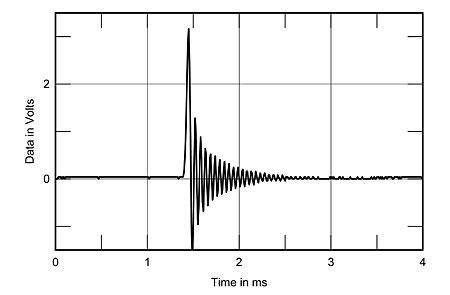
The Meridian digital filter behaves exactly like my passive analog filter, when compared to the Benchmark and the Yamaha,
no pre-ringing but higher amplitude of post-ringing.
The Benchmark shows a symmetric ringing, (pre- and post-ringing),
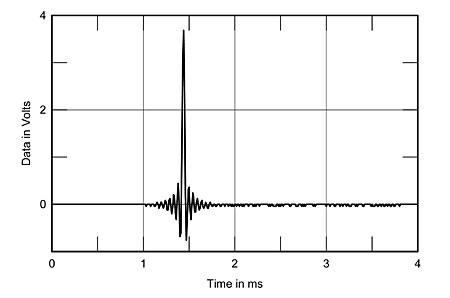
while the Yamaha is dominantly pre-ringing.
The Yamaha's digital filter is a 20 year old design...
Most important:
While the absence of pre-ringing very likely contributed to the 808i.2's fine sound...
Seems to confirm that the sound of analog filtered non os is superior to modern "off the shelf" digital filters.
- Status
- This old topic is closed. If you want to reopen this topic, contact a moderator using the "Report Post" button.
- Home
- Source & Line
- Digital Line Level
- NOS DAC with oversampling - anybody done it?
